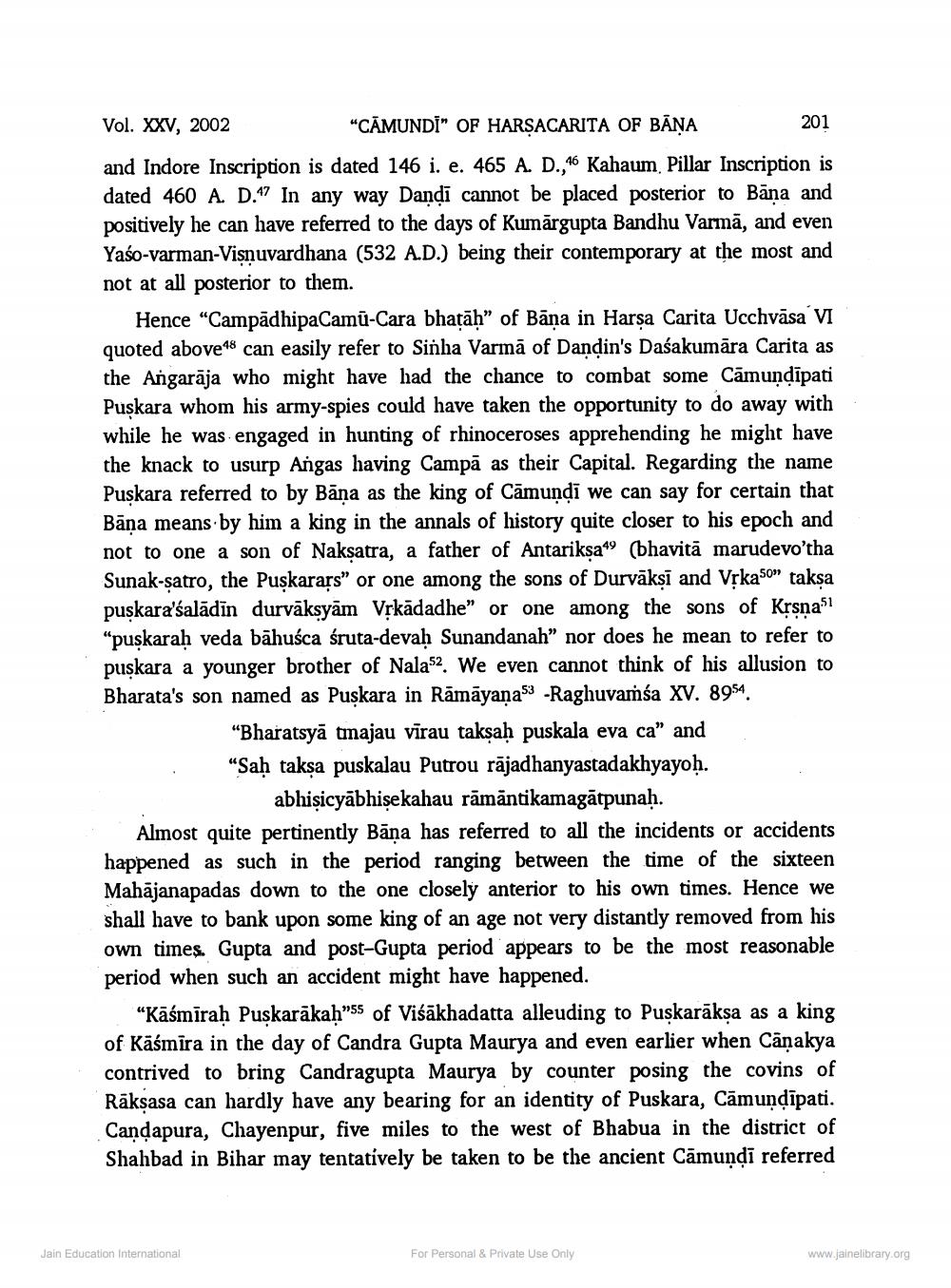________________
Vol. XXV, 2002 "CĀMUNDI" OF HARSACARITA OF BĀŅA
201 and Indore Inscription is dated 146 i. e. 465 A. D.,46 Kahaum Pillar Inscription is dated 460 A. D."7 In any way Dandi cannot be placed posterior to Bāna and positively he can have referred to the days of Kumārgupta Bandhu Varmā, and even Yaśo-varman-Vişnuvardhana (532 A.D.) being their contemporary at the most and not at all posterior to them.
Hence “CampādhipaCamū-Cara bhatāh” of Bāna in Harsa Carita Ucchvāsa VI quoted above 18 can easily refer to Sinha Varma of Dandin's Daśakumāra Carita as the Angarāja who might have had the chance to combat some Cāmundīpati Puskara whom his army-spies could have taken the opportunity to do away with while he was engaged in hunting of rhinoceroses apprehending he might have the knack to usurp Angas having Campā as their Capital. Regarding the name
referred to by Bāna as the king of Cāmundi we can say for certain that Bāna means by him a king in the annals of history quite closer to his epoch and not to one a son of Naksatra, a father of Antariksa(bhavitā marudevo'tha Sunak-şatro, the Puşkaraļs" or one among the sons of Durvākşi and VỊkaso” takşa puskara'śalādin durvāksyām Vņkādadhe" or one among the sons of Kęsnasi "puskaraḥ veda bāhuśca śruta-devah Sunandanah” nor does he mean to refer to puskara a younger brother of Nala52. We even cannot think of his allusion to Bharata's son named as Puskara in Rāmāyaṇa53 - Raghuvamsa XV. 8954.
"Bharatsyā tmajau vīrau taksah puskala eva ca" and “Saḥ taksa puskalau Putrou rājadhanyastadakhyayoh.
abhișicyābhisekahau rāmāntikamagātpunaḥ. Almost quite pertinently Bāna has referred to all the incidents or accidents happened as such in the period ranging between the time of the sixteen Mahājanapadas down to the one closely anterior to his own times. Hence we shall have to bank upon some king of an age not very distantly removed from his own times. Gupta and post-Gupta period appears to be the most reasonable period when such an accident might have happened.
"Kāśmirah Puskarākah”55 of Viśākhadatta alleuding to Puskarāksa as a king of Kāśmira in the day of Candra Gupta Maurya and even earlier when Cāņakya contrived to bring Candragupta Maurya by counter posing the covins of Raksasa can hardly have any bearing for an identity of Puskara, Cämundīpati. Candapura, Chayenpur, five miles to the west of Bhabua in the district of Shahbad in Bihar may tentatively be taken to be the ancient Camundi referred
Jain Education International
For Personal & Private Use Only
www.jainelibrary.org




